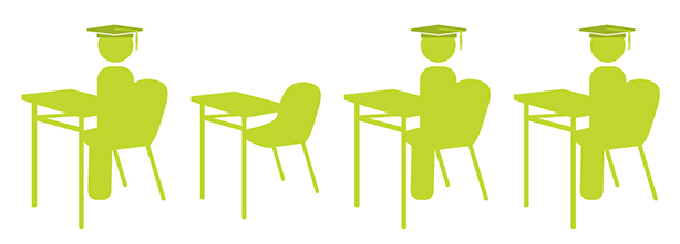
When it comes to school discipline, the fact that low-income and minority students are more likely to get suspended than students who are white or more well off is nothing new.
In an effort to turn things around, some education policymakers are beginning to take a critical look at the use of school suspensions.
A recent example is this proposed measure for the District of Columbia Public Schools.
Among other things, the proposed measure would prohibit automatic suspensions. It would also prohibit suspension and expulsion for preschool through middle school students, except in cases of threatened or actual serious physical or emotional injury. High schools would be prohibited from suspending students for being absent or tardy, not wearing their uniforms and “purely behavioral” incidents such as willful defiance.
Since research shows most suspensions are for subjective, minor rule infractions such as tardiness, disrespect, insubordination or dress code violations, and that minority students, particularly African-American students, are disroportionately disciplined for such infractions, the proposed suspension ban for the District of Columbia’s school system might appear to be a step in the right direction.
However, speaking as a researcher of education policy, I believe the reality is that a suspension ban could potentially harm the very students it is designed to help. For this reason, a careful look at the pros and cons of getting rid of suspensions altogether is warranted.
A broader trend
As a policy proposal, the “Student Fair Access to School Act” is not unique. It is part of a trend of efforts to move away from the zero tolerance policies of the early 2000s and to hopefully reduce or eliminate the racial discipline gap.
States such as North Carolina have moved to prohibit out-of-school suspensions and expulsions unless they are required under federal or state law. Many others, like Connecticut, California and Texas, have imposed such restrictions for suspensions for younger students.
Several urban school districts, such as those in Baltimore, Philadelphia, Denver and Los Angeles, have also undergone school discipline reform.
The potential benefits of this movement away from suspensions are broad. In theory, it will likely benefit black and low-income students the most because black students are three times more likely to be suspended or expelled from school compared to white students. Similarly, low-income students are more likely to be suspended than well-off students.
Benefits seen
The strongest and most consistent benefit of these reforms is increased school attendance.
School systems that cut back on suspensions should also see an increasein academic achievement. The reason is simple: Students spend more time in class when they don’t get suspended. It is also beneficial when suspension policies require schools to continue education for suspended students, as does the proposed measure in Washington, D.C.
School systems that cut back on suspensions may also see a decrease in the dropout rate.
Also, if school systems include restorative justice – that is, a peer mediation process – in their discipline plans, the level of willful defiant behaviors and general misbehavior may decrease. This should lead to improvements in school climate and morale.
Potential drawbacks
Despite the various benefits that may result from fewer suspensions and better use of alternative forms of discipline, there could be unintended consequences.
For starters, the ban on suspensions would remove an important tool that teachers use to maintain classroom order. For this reason, teachers often resist efforts to replace suspensions with less punitive measures.
In schools that have curtailed the use of suspensions, teachers frequently complain about time-consuming paperwork, limited training and inadequate resources to properly administer alternative discipline practices. This leads to a poor work environment for teachers and a weak academic climate for students.
Dissatisfaction with poorly designed and poorly implemented discipline policies is a top reason that teachers leave schools. Without teacher commitment and buy-in, discipline reform runs the risk of failure.
Along similar lines, though many scholars dispute it, the simple threat of punitive disciplinary action has been shown to be effective for some students. Getting rid of suspensions may increase rule violations and more severe infractions.
For instance, Philadelphia schools saw an increase in more serious rule infractions after banning suspensions for less severe issues.
Not a cure-all
A ban on suspensions may also increase the use of in-school suspensions. And just because a student has an in-school suspension does not ensure that a student is integrated and engaged in the learning environment. In fact, in-school suspensions can be just as harmful as out-of-schoolsuspension if students are held in isolation without instruction or rehabilitative counseling.
A ban on suspensions might begin to make a dent in longstanding disparities in school discipline. However, unless suspension bans are accompanied by funding for alternative tools, such as restorative justice programs or professional training in adolescent development and classroom conflict management, I believe suspension bans may cause more problems than they solve.
Author Bio: K. Juree Capers is an Assistant Professor of Public Management and Policy at Georgia State University
